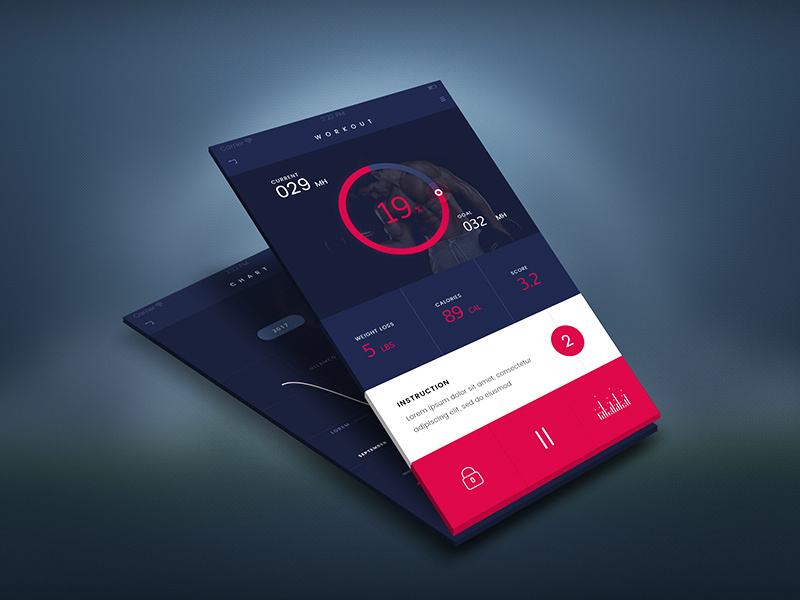Even though design attracts a lot of interest in these modern times of easily usable technologies, there is some misunderstanding surrounding the user experience design process. Some people believe the UX design process to be a one-dimensional task that mainly involves just one type of thought process.
There are two camps that such people divide into:
- Those who believe that design is mainly a gestalt experience based on a burst of inspiration (gestalters);
- Those who say that designing is primarily an ongoing list of tasks (taskers).

If you conduct a study of various UX design agencies, you will see that most of them are trying to keep their work within either one style or the other. For example, gestalters follow a concept, in which design happens when they get the requirements or have a brainstorm regarding project ideas and then have an influx of inspiration that leads them to a brilliant solution. Taskers, on the contrary, follow another concept, in which design has to do with checking items off of a list: get requirements, select design components, and so on.
Defining the Essence of UX Design
Now, as I already mentioned, there are two groups of people with two different approaches to UX design. That is, gestalters, who think that designing is almost entirely based on inspiration and shouldn’t take a lot of time for a talented specialist to go from zero to hero (i.e., completing a project). At the same time, there are taskers, who believe that designing depends on a proper structure of tasks, the completion of which the designer will slowly reach until the project is finished. The latter also emphasizes that functions or steps have to be precise and straightforward in order to cross them off the list. In contrast, a more complicated task, such as defining the overall project concept, isn’t as significant.
The fact is that both of these camps are correct in some way. Both of them make up a part of every design process. Nevertheless, both parties are overlooking a lot concerning the skill and dimension involved in any design process, if they are arguing that just one way of doing it is the only right way of designing. In its essence, a design process uses both the tasker and gestalt way of thinking. It puts a designer in a position where they have to imagine entire concepts while taking care of all the tasks to bring a project to completion.
So, What Does That Have to Do with Physics?
In case you aren’t used to the concept of the wave-particle duality courtesy of quantum mechanics, this entire idea might be confusing to you. It’s generally hard for people to imagine that they can accomplish a task in more than one way simultaneously. In reality, it is safe to state that applying both approaches at the same time is the best way to do UX design. The unique combination of pressure and inspiration or lack of it results in great designs.
The thing is that any design is a mixture of a wide range of limitations and requirements in a basic concept and conveyed in creative terms. To unify and arrange a project’s restrictions and conditions and then devise an idea with a specific creative expression, the designer or design team has to incorporate all the different and sometimes seemingly inconsistent parts into a healthy, convincing vision. This approach combines the gestalt way of thinking with the creative direction, leaving room for both talent and step-by-step task completion.
In terms of the step-by-step part, it helps to reveal the smallest details of a design project that are overlooked otherwise. Whatever the project, its original UX design concept is always full of intention and character, but isn’t precisely thought-out. The step-by-step design process is a great way to consider all the immediate content, create mockups, ensure that all stakeholders are up to date with the latest developments at each step of the project.
Simply put, the designer or design team has to maintain logical and holistic thinking at the same moment to successfully carry out a vision or concept. It’s not like you can first think of the project one way and then switch to another way of thinking at another point. It is crucial to combine the two. Designers have to cherish the flare of the initial vision while prioritizing and expanding it via consecutive steps. If you are a UX design agency or have a design department in your company, your team has to keep up with its vision of the project throughout the process, since emphasizing on small details can diminish or even eradicate it.
Conclusion
Creating a successful and viable user experience design that will provide the end-user with a memorable experience is a tough job. Thus, each of your team members should be both a fan of the process and a dreamer, so that they can generate outstanding ideas and then carry them out in a proper, effective way. Just like the particle-wave duality in quantum physics sees objects that look like particles behave like waves, the work of a UX designer combines clarity with complexity. Although the process can be extremely complex, the result should be clear and straightforward when it gets into the end-users hands.
Leave a Reply